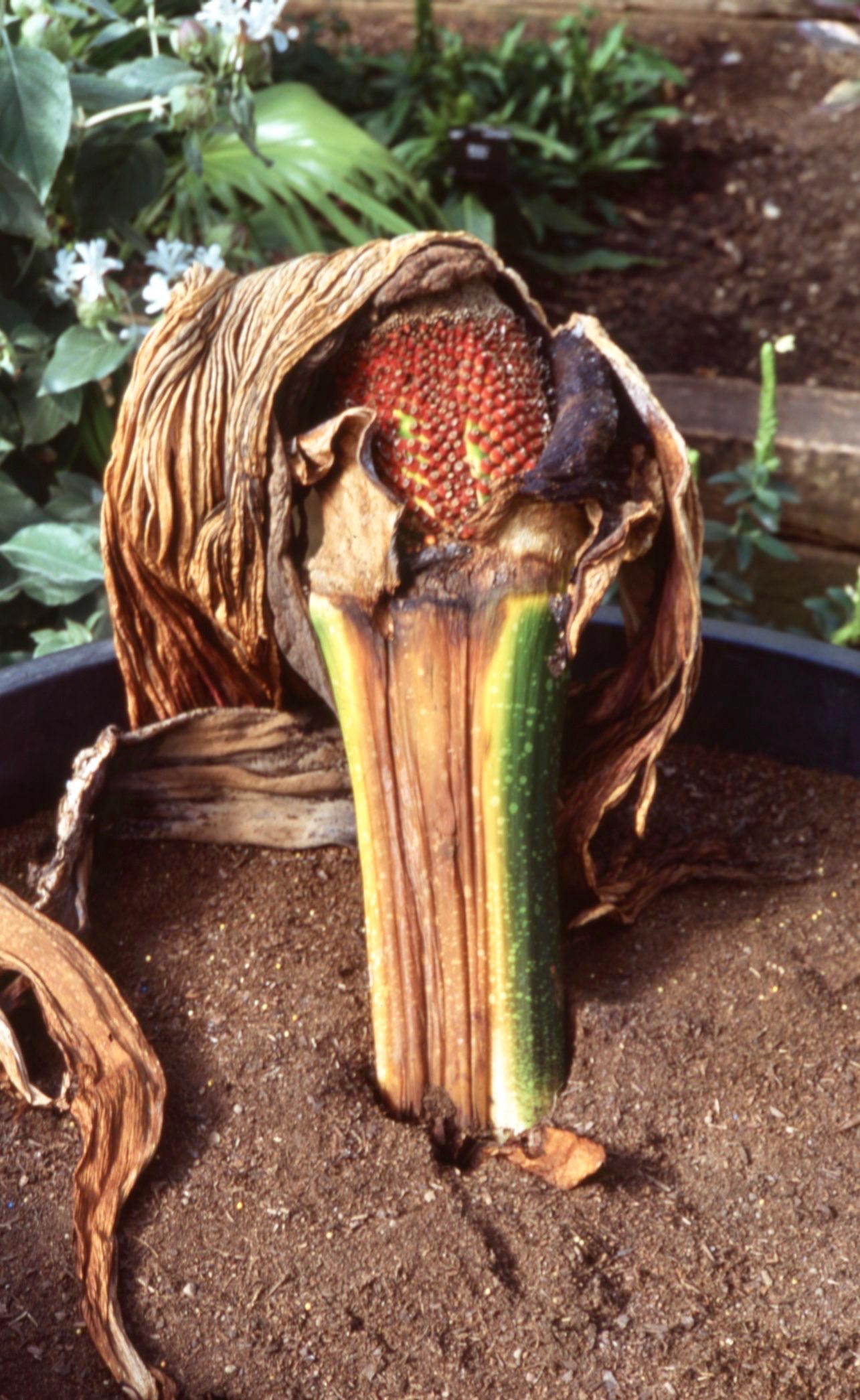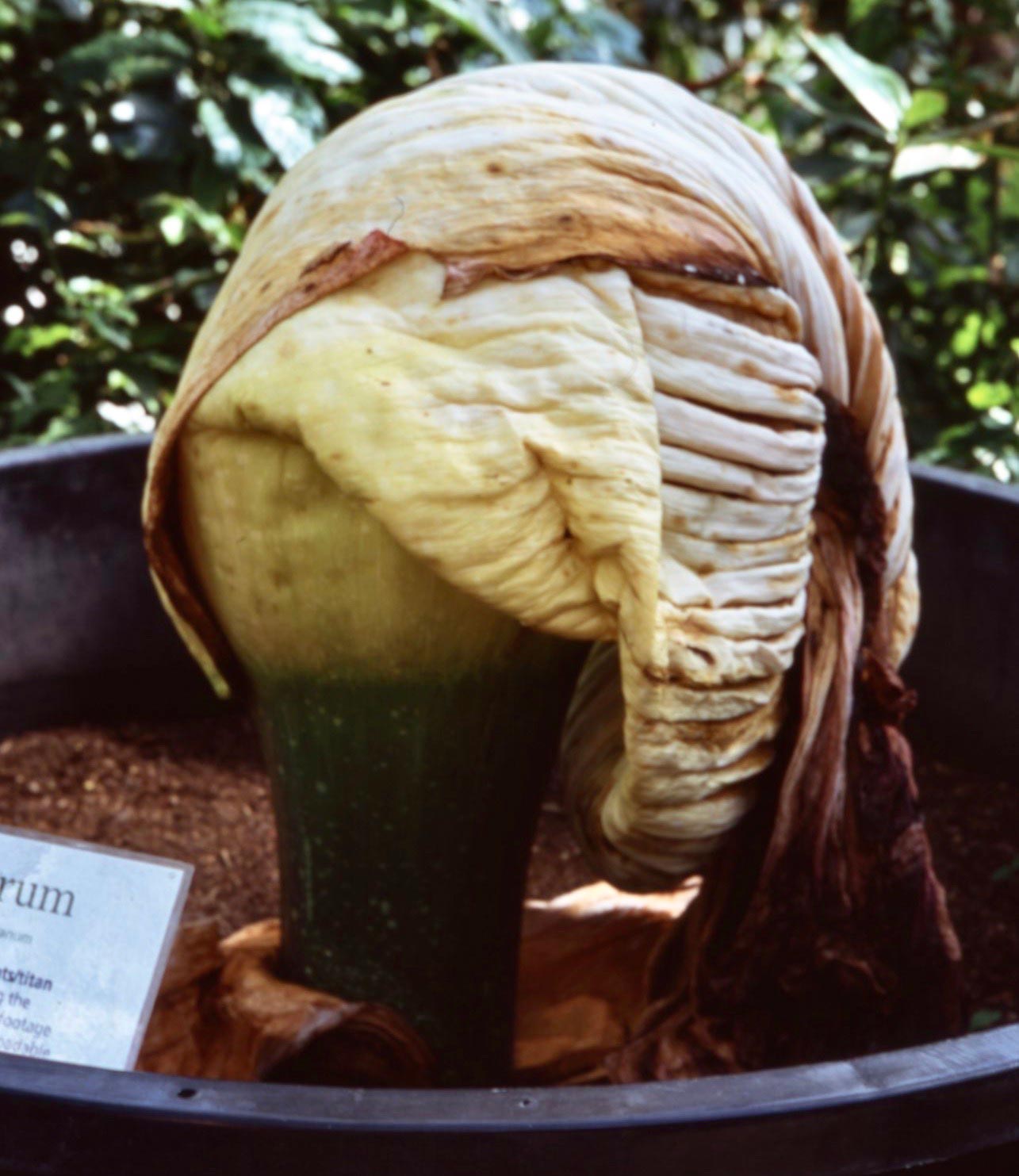This afternoon I scanned a few more recently rediscovered colour slides from August 2008. These are from a visit to Kew Gardens.



Beside the lake huge gunnera grow; upon it plays a splendid fountain.


The Titan Arum, or Amorphophallus Titanum, otherwise, on account of its putrid pong, known as the corpse plant, a native of Sumatra, is grown in the tropical hothouse. My second image bears a loose resemblance to the unfortunate hooded Elephant Man of Victorian England.
Later, I received a text inviting me to book an appointment for a Covid vaccine at our own surgery in Milford on Sea. This has to be done on line. If I don’t do it I will receive a phone call next week. Having already been offered and booked one in Christchurch I tried to telephone to discuss this. It was, of course, not possible. It looks as if I will take the bird in the hand.
With two more chapters of ‘Little Dorrit’ read, I scanned two more of Charles Keeping’s inimitable illustrations.
First we have ‘It became necessary to lead Mr F’s Aunt from the room’, which offers three different, accurate portraits.
‘Past homeless people lying coiled up in nooks’ depicts a social ill which to some lesser extent is still with us, as demonstrated by this East End Review article of April 15th 2015:
‘The homeless person sleeping rough might be a common image in London today, but in the 19th century there were hundreds spilling onto the streets every night.
Short but powerful, the new exhibition Homes of the Homeless: Seeking Shelter in Victorian London at the Geffrye Museum seeks to illuminate the daily struggle of the bitterly poor in the city 200 years ago. What this exhibition highlights most candidly is the juxtaposition between the Victorian ideal of the home and the reality of destitution in this period.
Some took to sleeping in London’s parks, while others tumbled into shelters and workhouses, where conditions varied massively. Queueing for accommodation was something frequently seen on the streets come dark, even in central locations like Covent Garden, and protests broke out as hundreds camped out in Trafalgar Square.

Touching in so many different ways, the exhibition features paintings, photographs, testimonials and engravings all depicting homelessness in its various guises. The destitute family was a common image, with children evoking particular sympathy, and billboards and newspapers both carried adverts imploring people to give whatever they could to support the city’s more unfortunate souls. The government did, by today’s standards, much to stem the flow of homelessness in the capital, but as the century progressed, the problem became more difficult to contain.
Homes of the Homeless charts this challenge, touching on the different approaches to homelessness – from casual wards where ‘inmates’ could exchange hard labour for a place to sleep, to model lodging houses that were designed to more closely imitate a real home – as well as real people’s reactions to their dire circumstances, collected from investigative journalism and charity reports.
Thoroughly researched and straightforwardly presented, this exhibition is accessible to anyone interested in the history of London. With glaring relevance today, it presents a significant slice of history that should not be overlooked, and an important lesson in charity and compassion. Homes of the Homeless is a succinct, enlightening exhibition in one of London’s most charming museums.’
This evening we dined on Jackie’s wholesome chicken and vegetable stewp with crusty bread, with which I drank more of the Macon.

